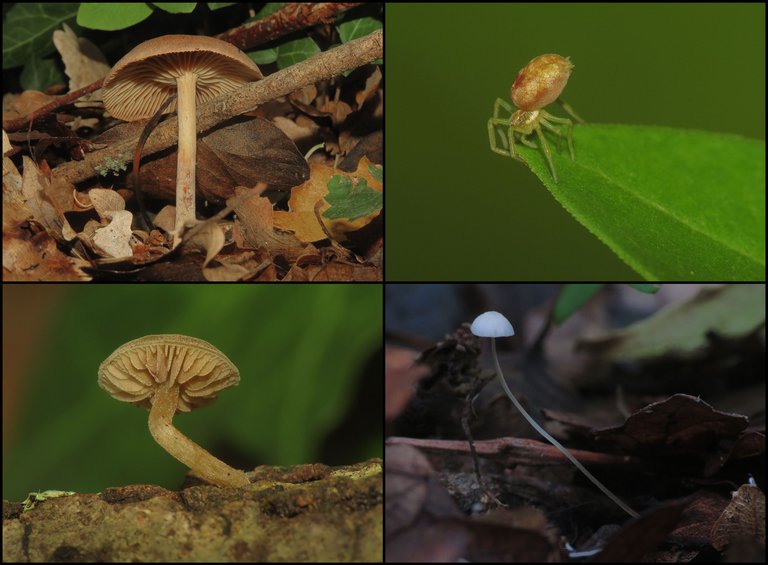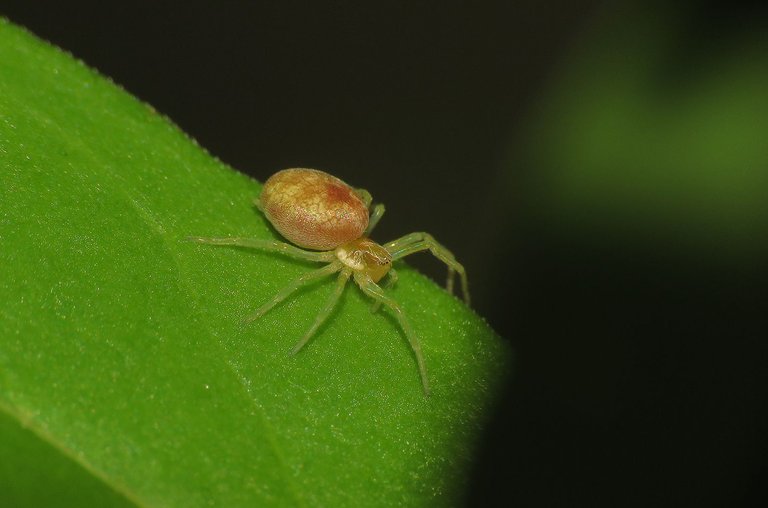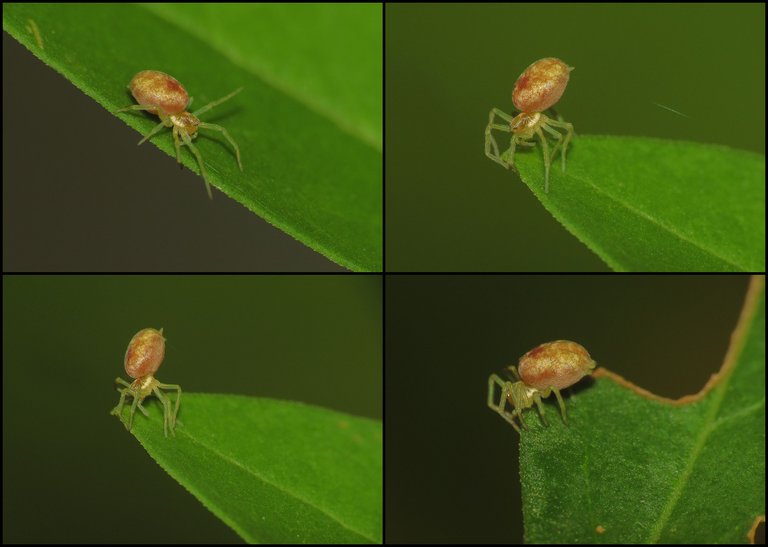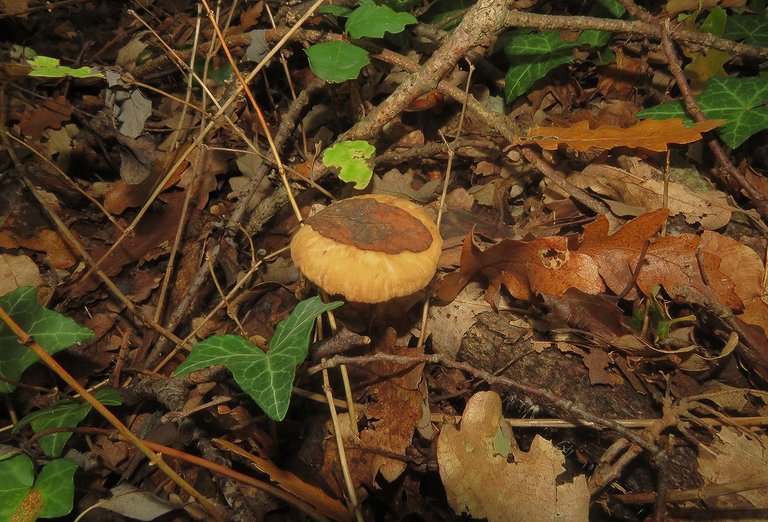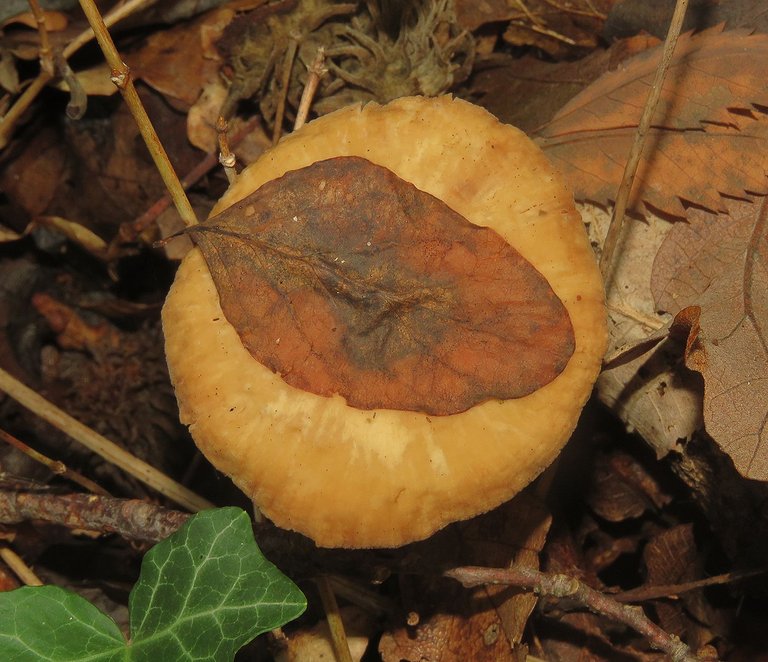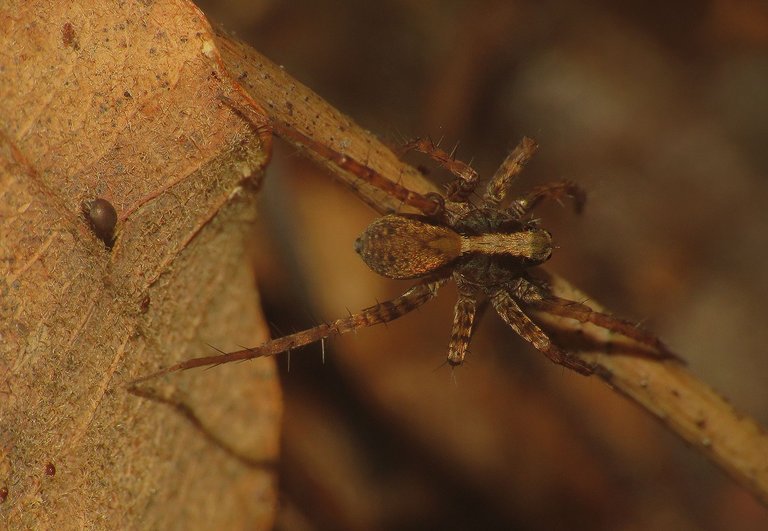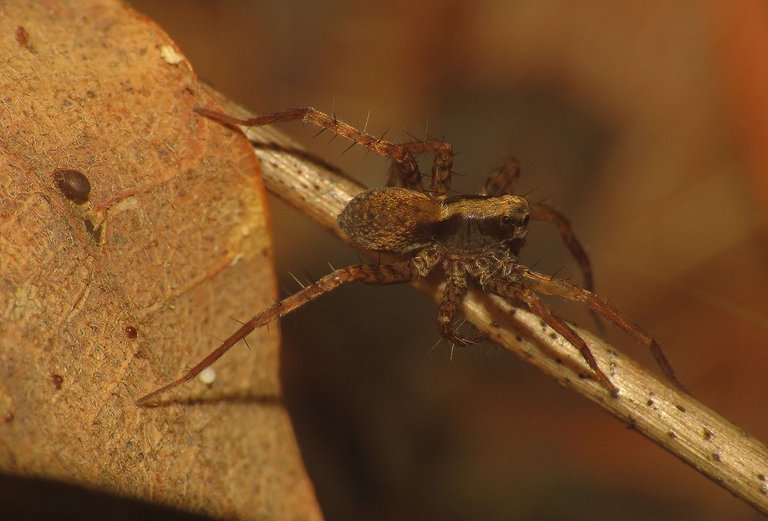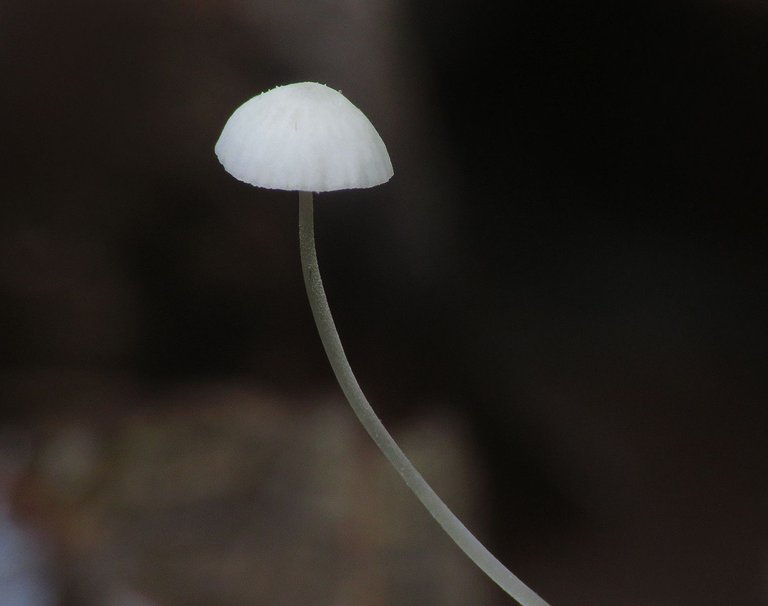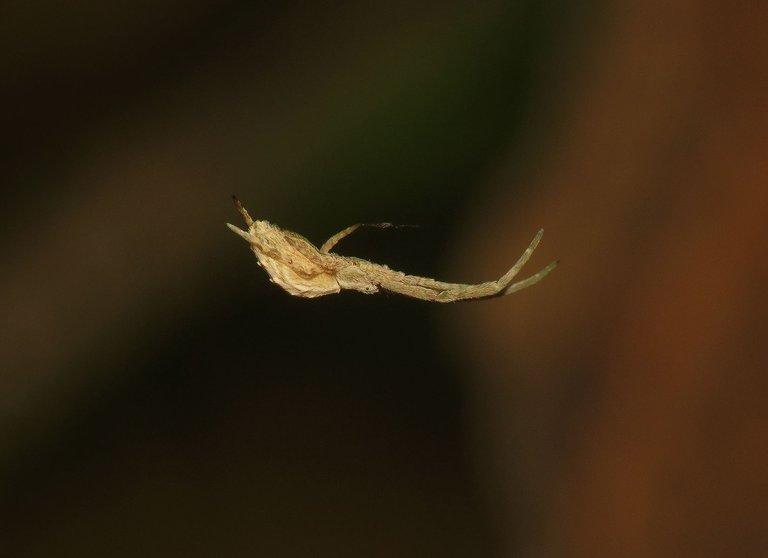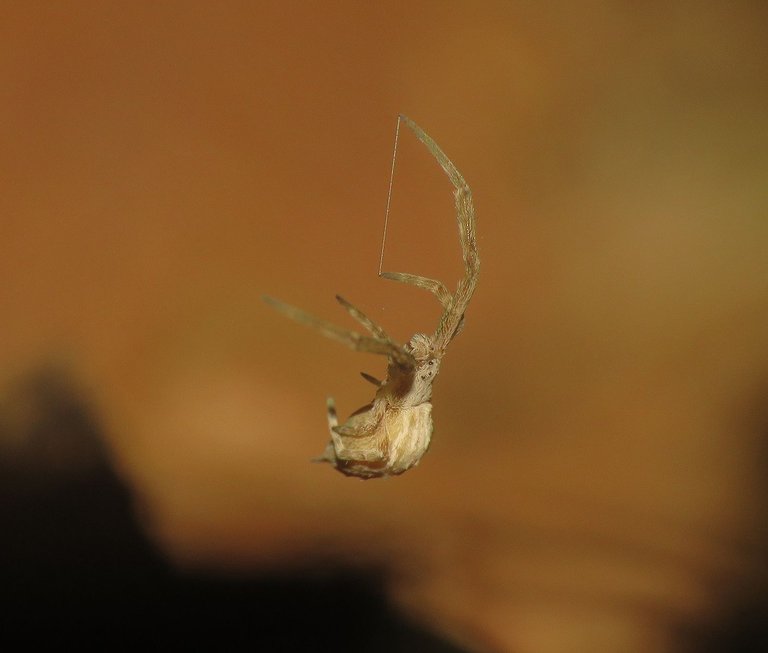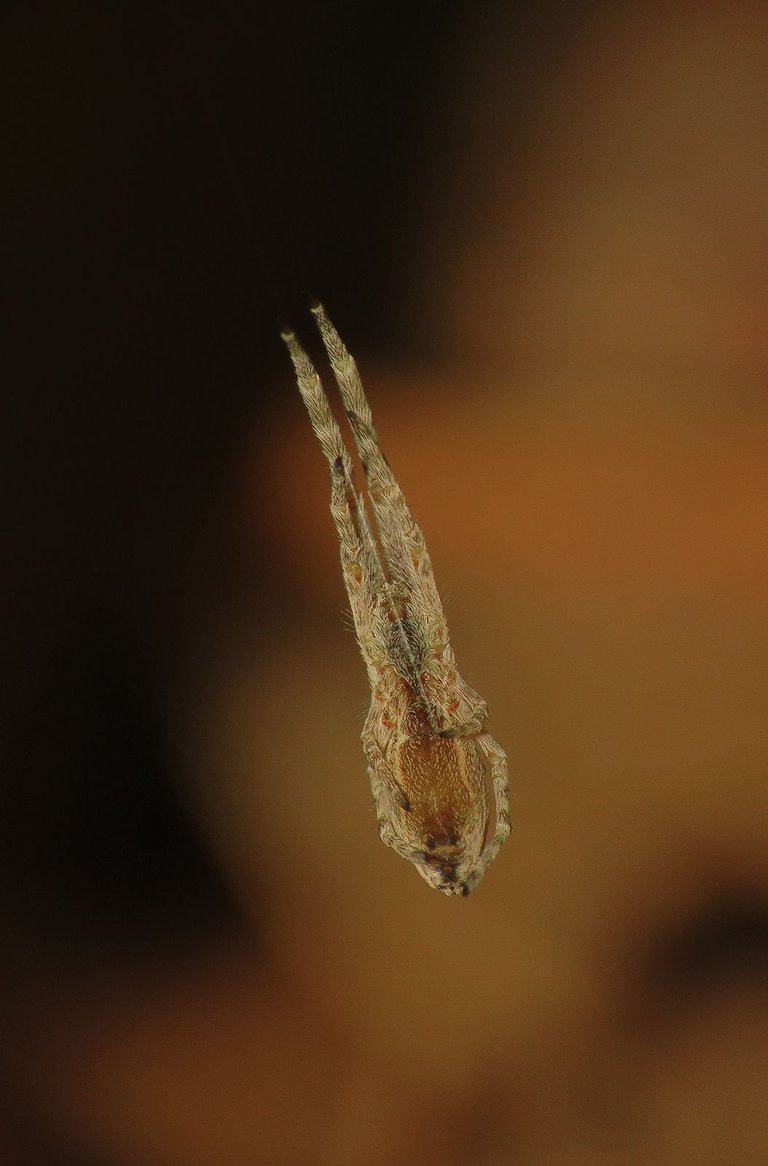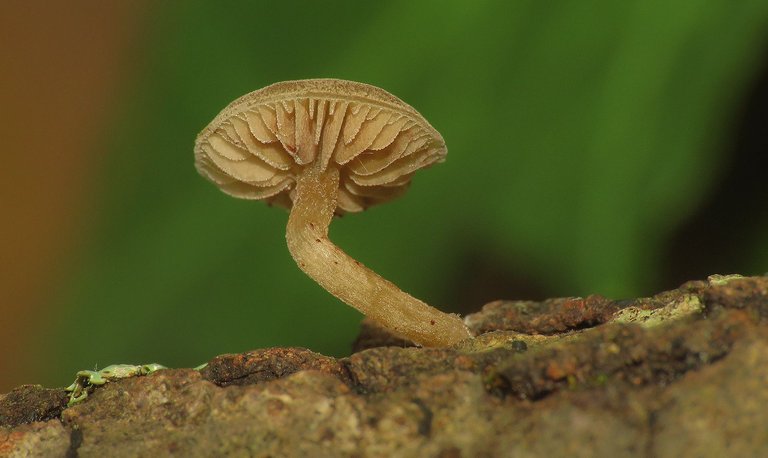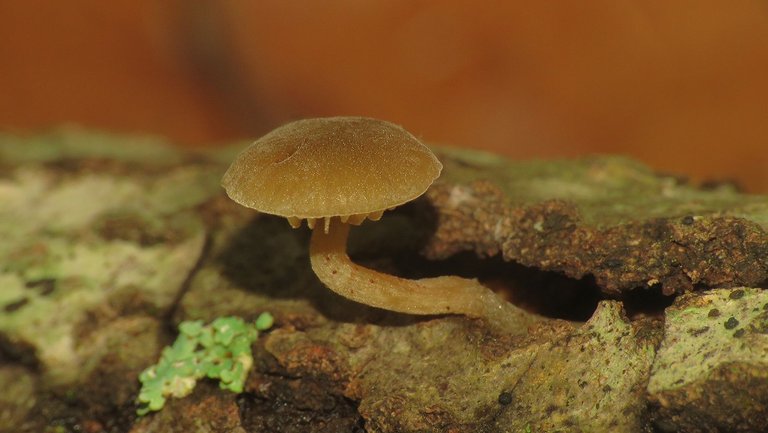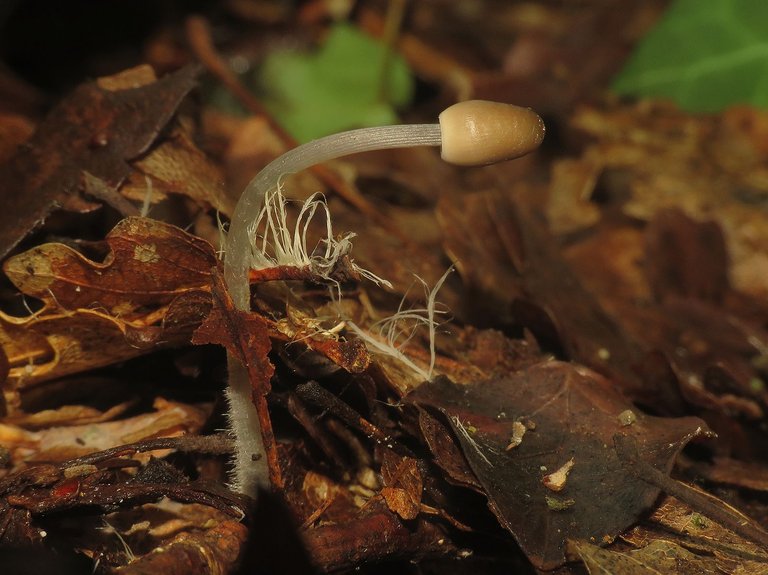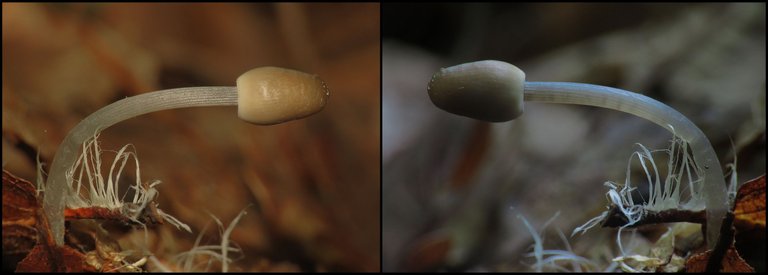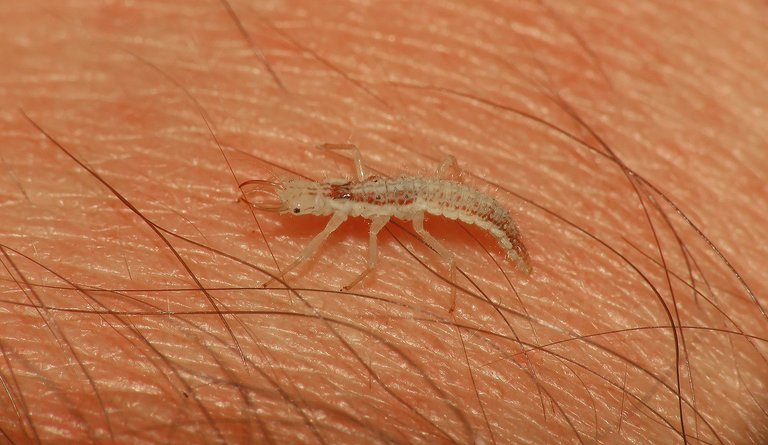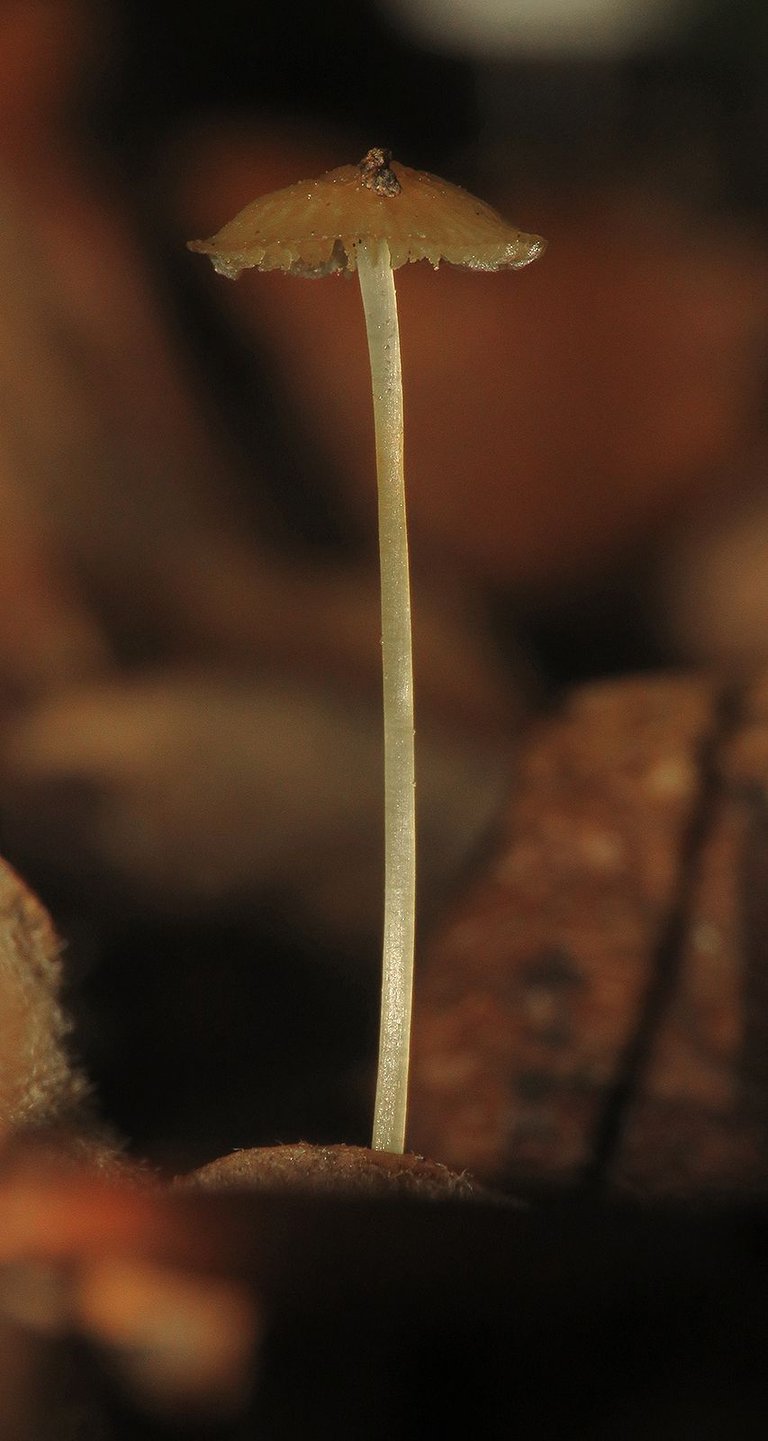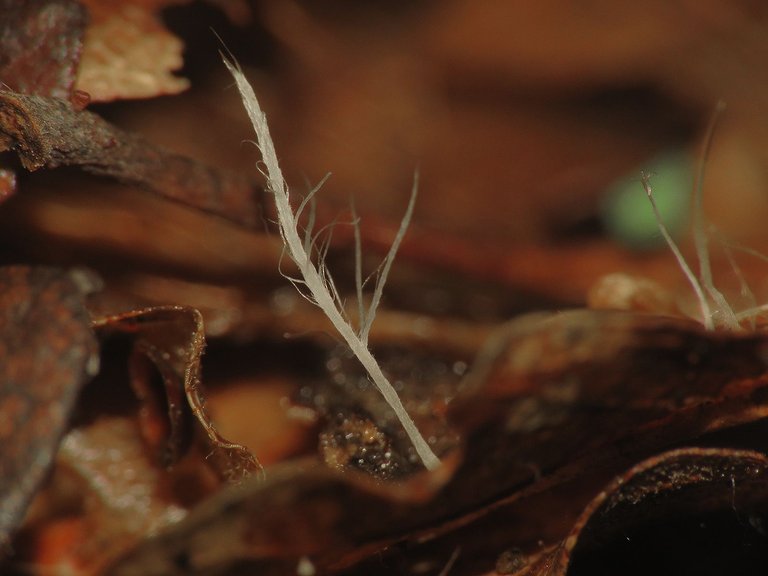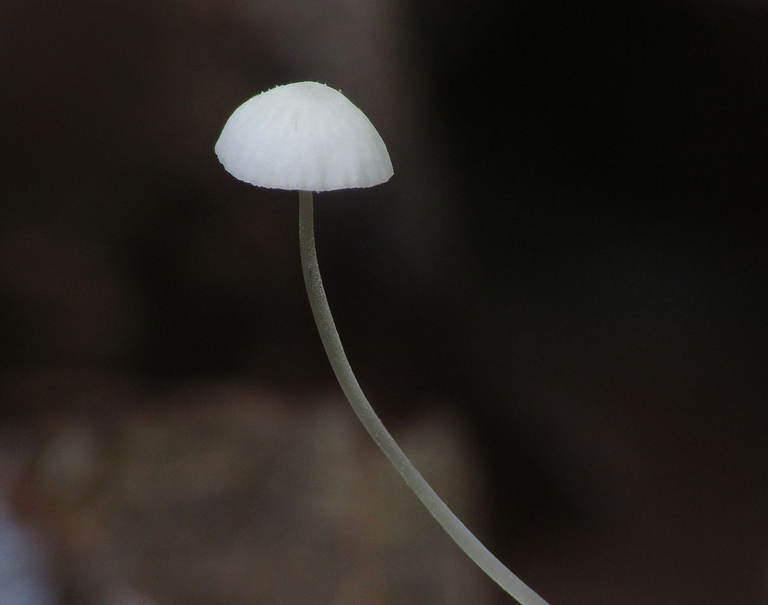You'll see some mushrooms here. Yep. But you'll also see some spiders just slightly outnumbered by mushrooms. I thought about publishing this thing in the dead or hibernating "Arachnids" community at first. But then I felt like flipping a coin would be the right thing to do.
It was a two-euro coin. Number two on one side and the face of some dude that must have been important for someone in some period on the other. The fatty profile of that dude turned today's post into my contribution to the #FungiFriday by @ewkaw
This interesting small mushroom from the Mycenaceae family grows ... ups, I mixed up the pictures. It's a spider. This is a spider, folks. Rounded abdomen, eight legs, no gills, no spores, it would be a weird mushroom if it were one.
Here you can see the same spider doing something with its silk. I watched him exploring the leaf and releasing a bit of silk from time to time. It wasn't building a web, that's for sure. Maybe was trying to get lifted in the air. Spiders do that when the wind is blowing. The silk would function as a parachute of sorts in that case. But the air was still, so I think the arachnid had other plans. What those plans were, I don't know.
But I know the name of the species. This is the Nigma flavescens, a spider from the Dictynidae family.

This is the Collybiopsis peronata. It's not a spider, that's all I can tell you about this mushroom. It grows and then decays like all living things. I used the small built-in flash of my camera in this photograph.
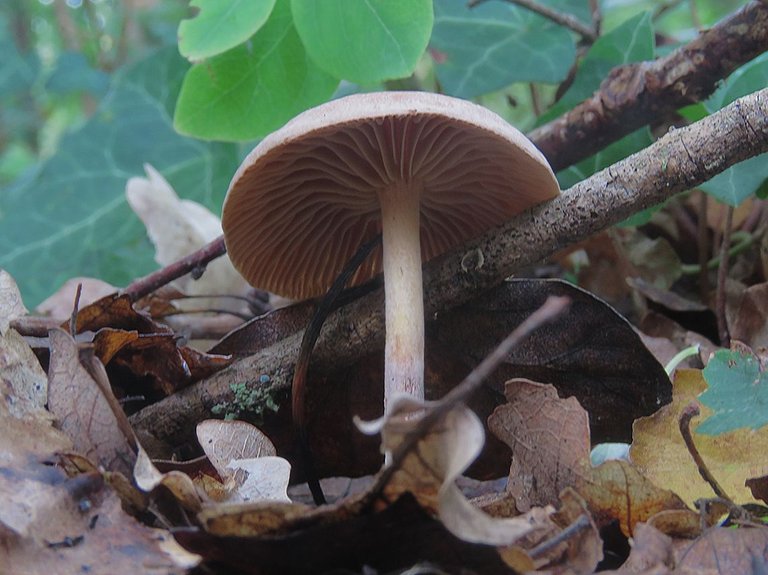
Here you can see the same scene in ambient light. The photograph is slightly blurred. The light was low on the forest floor, and the exposure was long enough to make the shooting more difficult than I would have liked it to be.
More often than not, I like experimenting with the camera, trying this and that, and I enjoy staying around one mushroom for hours. But sometimes I daydream about photographs taking themselves without me doing anything.
The same applies to writing and assembling the posts.
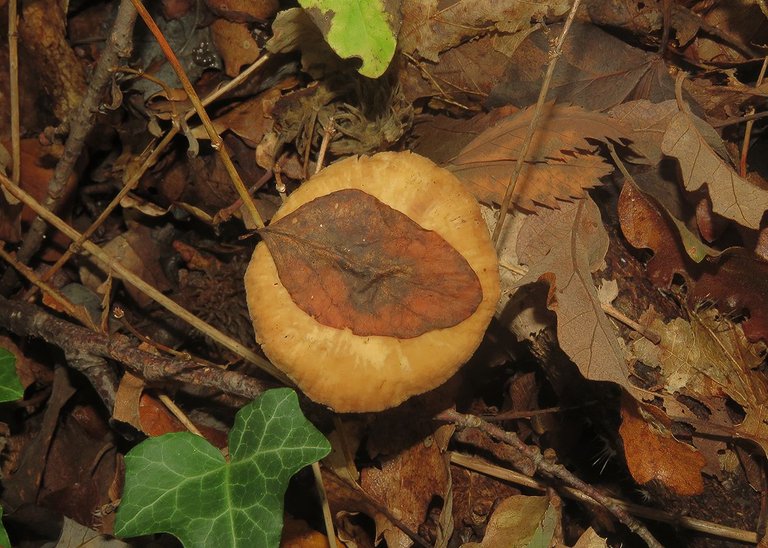
I don't know what mushroom is this. The only thing I photographed here is the top of its cap. I'm sure that it has gills underneath but I don't remember seeing them.
The thing that caught my attention was the dead leaf that looked like it was glued to the top of the mushroom's inconspicuous brown cap.
It was a stylish little detail, definitely something worth photographing.
This is a spider from the genus Pardosa of the Lycosidae family.
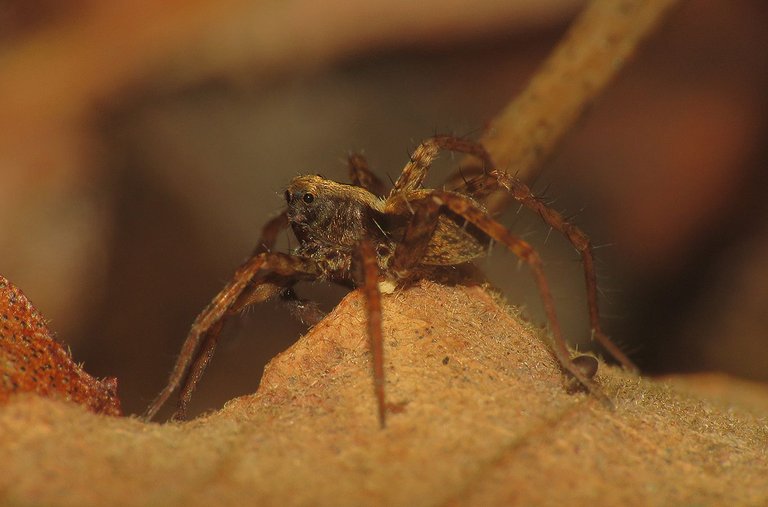
With quite a few similar, closely related wolf spiders present in the area, I can't tell you what species exactly this is.
It's a lovely little spider, well-camouflaged in the leaf litter, a spider that runs fast and doesn't build webs.
The small, elegant mushroom shown in this and the following photograph ...
... looks like something from the genus Mycena of the Mycenaceae family. Could be the Mycena adscendens. Or the Mycena tenerrima. Or some other Mycena.
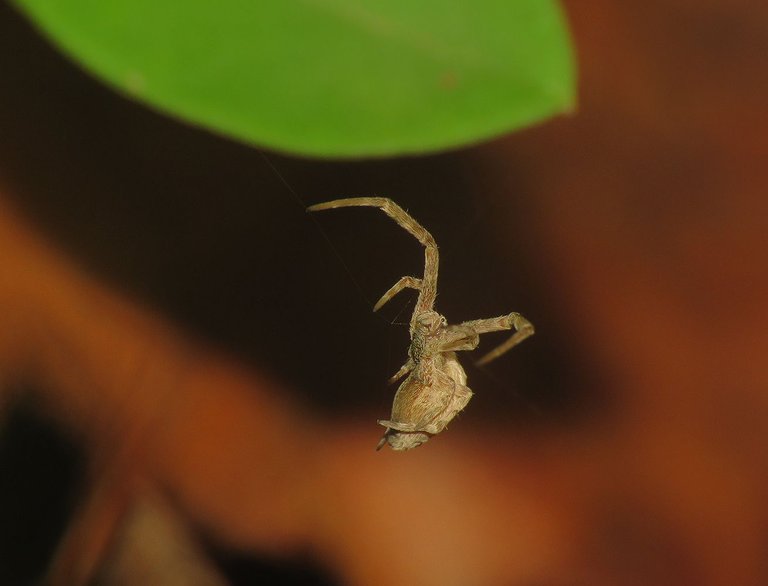
Here you can see another spider.
This is the Uloborus walckenaerius ...
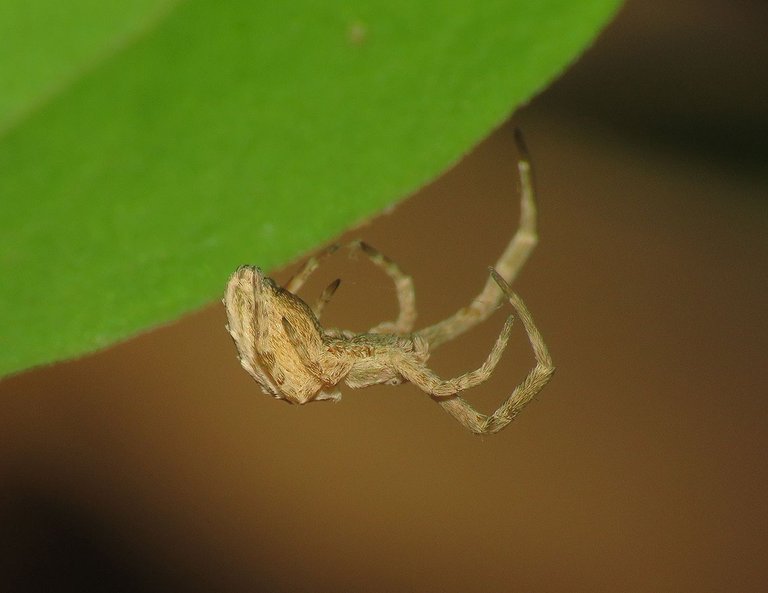
... a spider from the Uloboridae family.
In this shot, the flash of my camera has made visible a stretch of silk between two of the spider's eight legs. The shape formed by the legs and the thread resembles a bow or a fretsaw.
I didn't expect this cool detail to appear in the photograph and I noticed it only today while preparing all the visuals for this post.
Oh, I almost forgot to tell you! All these photographs were taken on the 24 of October, early in the morning, in the woods a couple of kilometers from the small town called Zminj.
When it rests on its horizontal web, Uloborus walckenaerius looks like an inconspicuous fragment of dry vegetation that fell from the surrounding trees.
This is the Simocybe centunculus, a small mushroom that grows on decaying wood. I used the flash of my camera in this photograph.
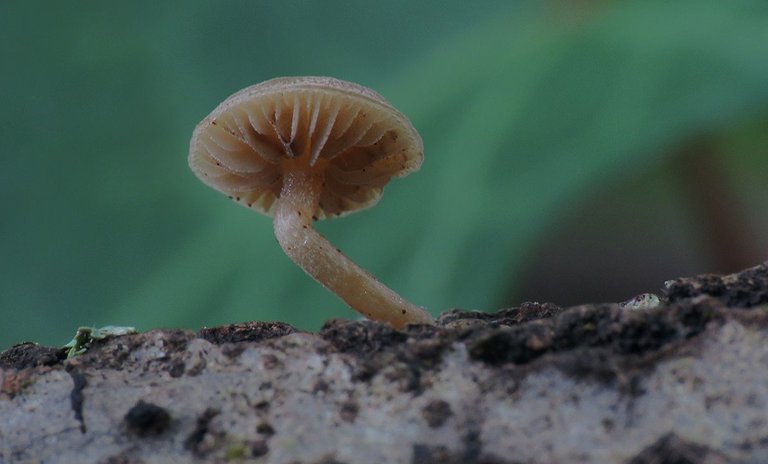
This shot shows the Simocybe centunculus in ambient light.
Here you can see the same mushroom from an angle that shows the top of its cap. Simocybe centunculus belongs to the Crepidotaceae family.
I'm pretty sure that this is a mushroom from the genus Mycena of the Mycenaceae family. Can't tell you the name of the species.
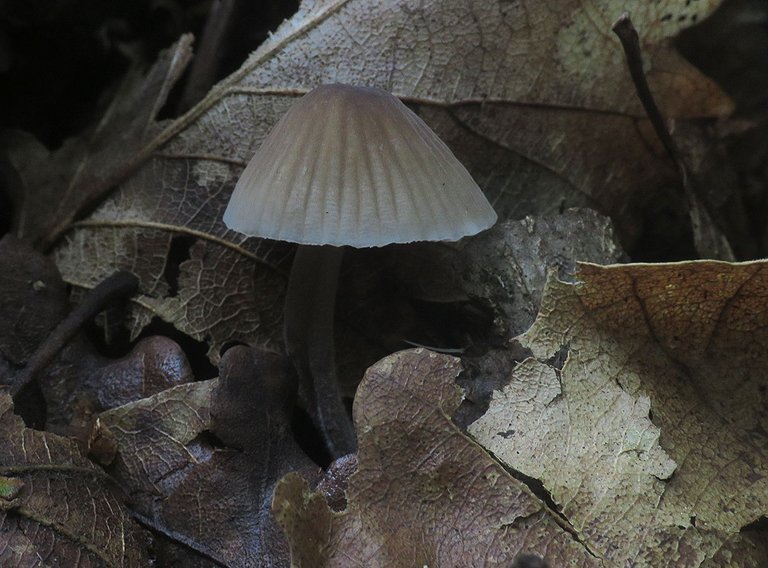
Here you can see the same mushroom photographed in ambient light.
This is a young Mycena amicta fruiting body.
Here I came closer so you can take a better look at the details.

At some point, while I was photographing the mushrooms, an interesting larva fell from the lower branches of an oak tree right on the arm of a friend who was there in the woods with me. In the following photograph ...
... the larva is posing on my arm.
The scientific name of this mushroom is blah blah blah - blah blah blah. I don't know what species is this. But I'm sure that is a Mycena. Let's call it Mycena incognita for this occasion.
This tryptich shows the same mushroom in ambient light. I mean, that applies to the two lateral shots, the central picture is a Photoshop edit.
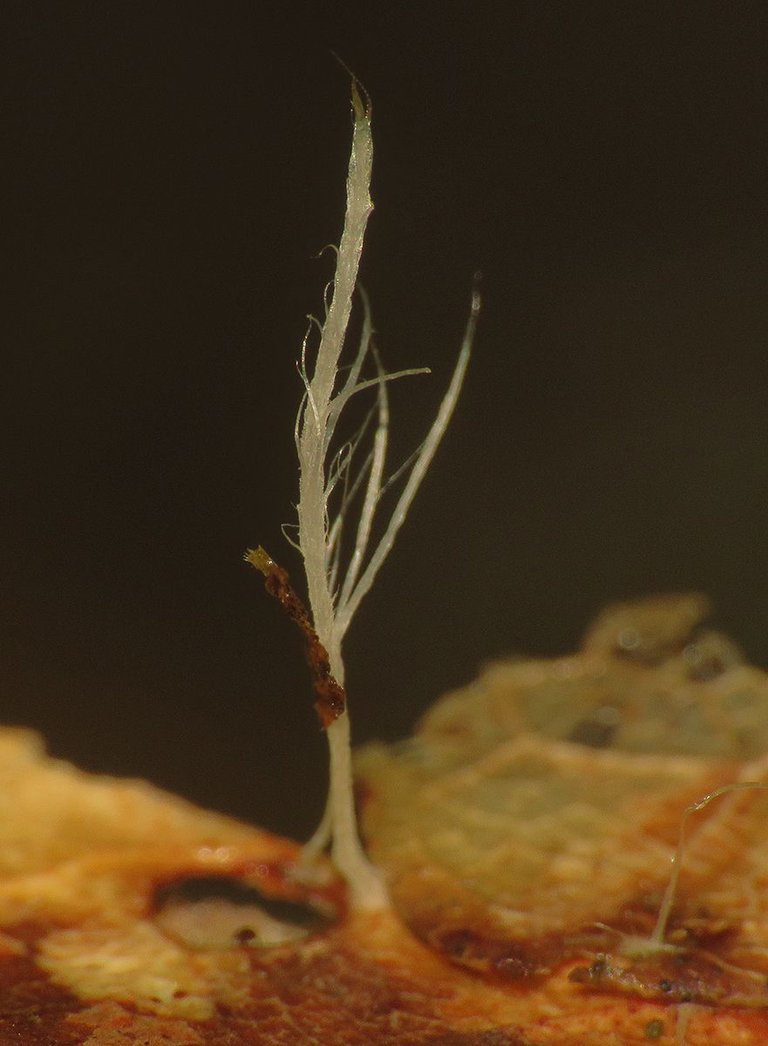
This thing looks like a ghostly little tree.
It's a mycelium of some fungus but don't ask me what fungus exactly.
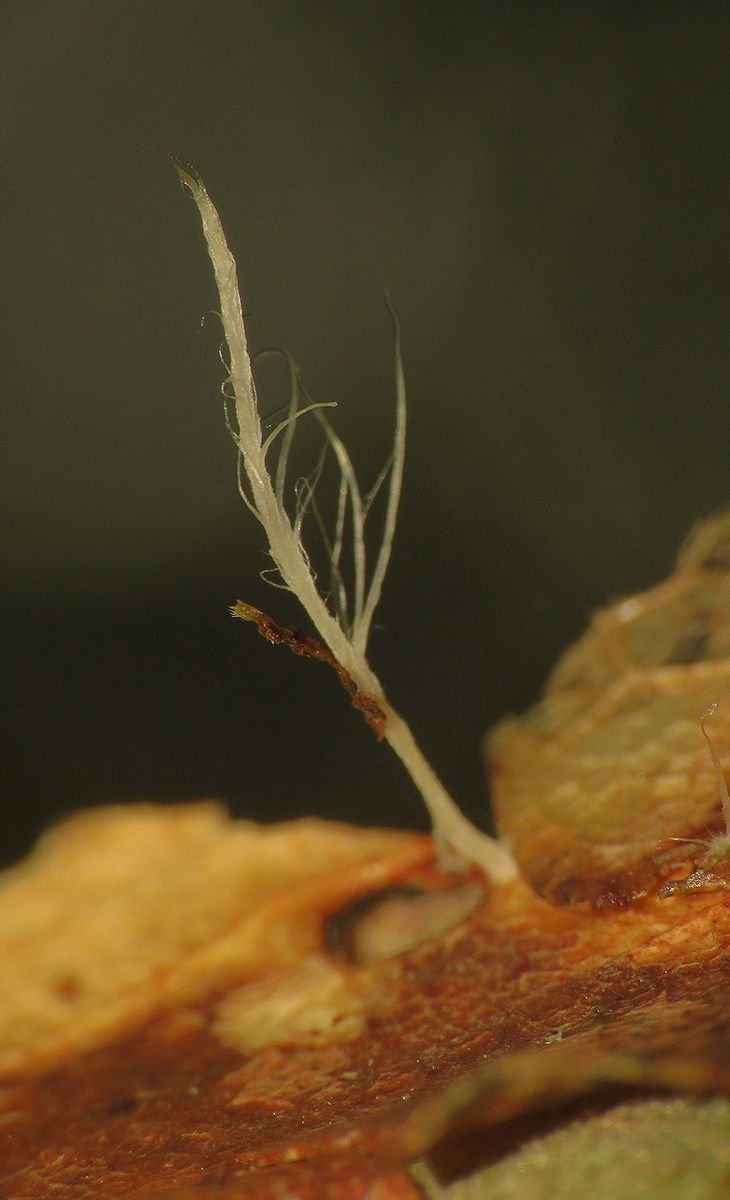
I'm getting tired of this post. The end isn't far, fortunately.
Here you can see another lovely brown mushroom I wasn't able to identify. It looks a lot like the Marasmius oreades but Marasmius oreades usually grows on lawns and meadows.
This is Marasmius bulliardii. Maybe. Probably. I don't know. Good night.
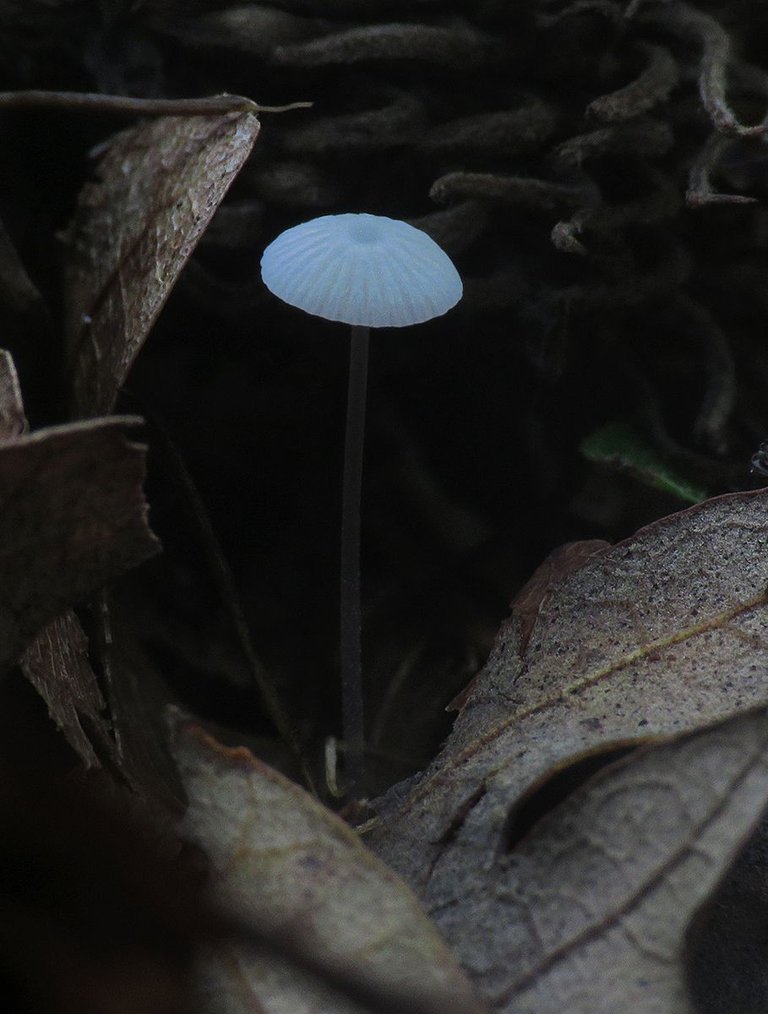
As always here on Hive, the photographs are my work.
